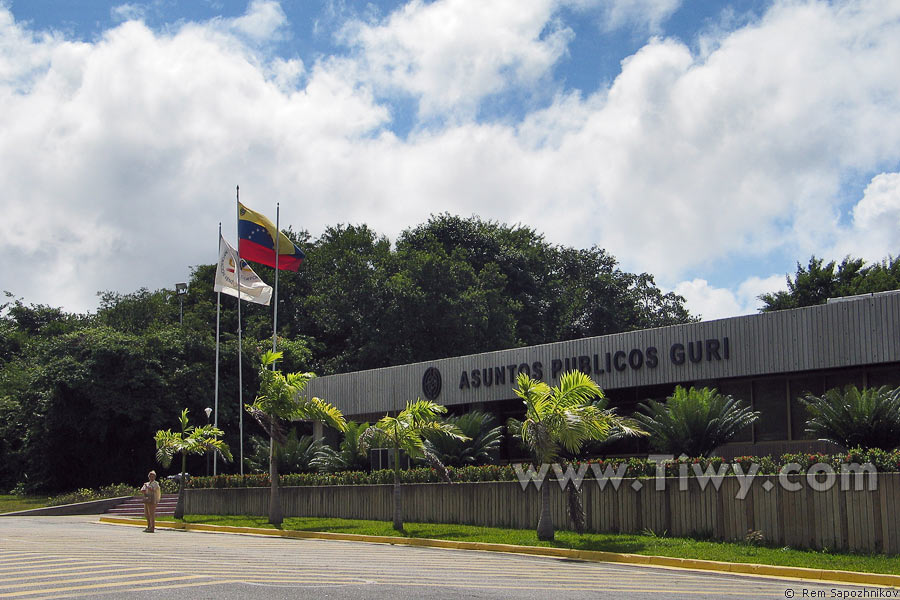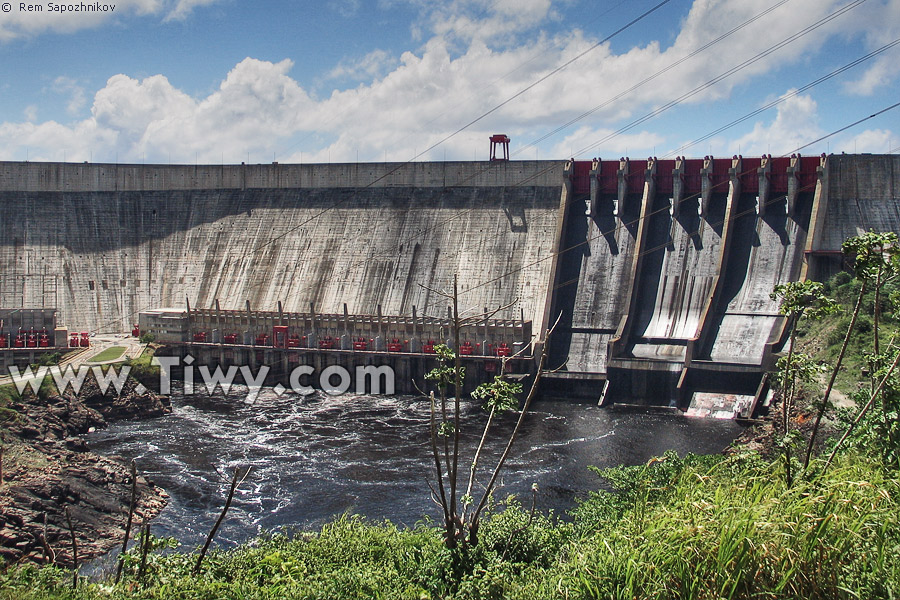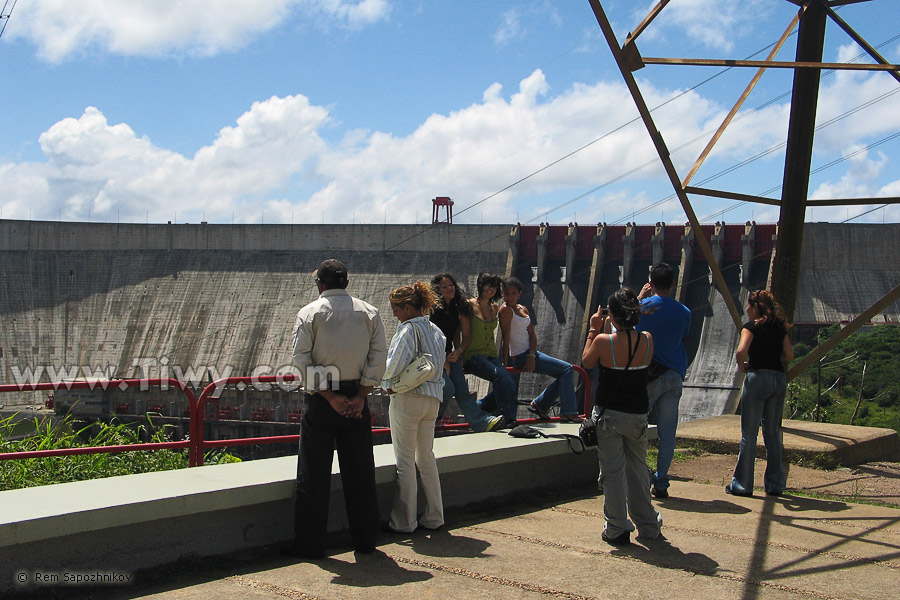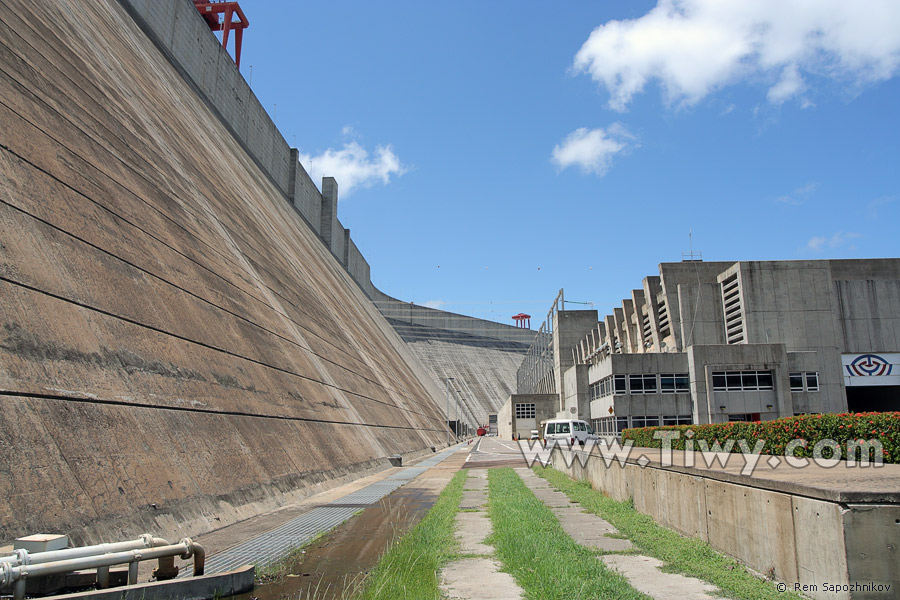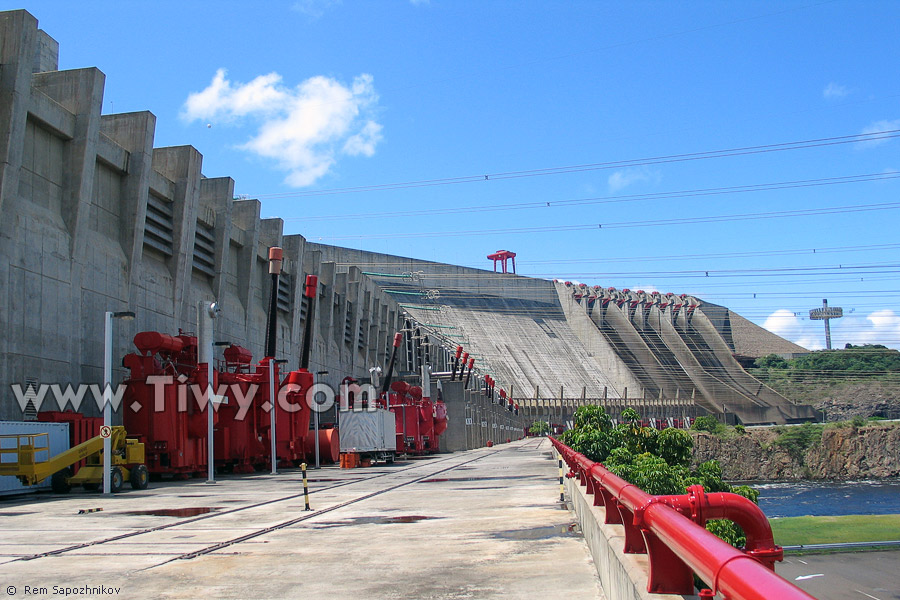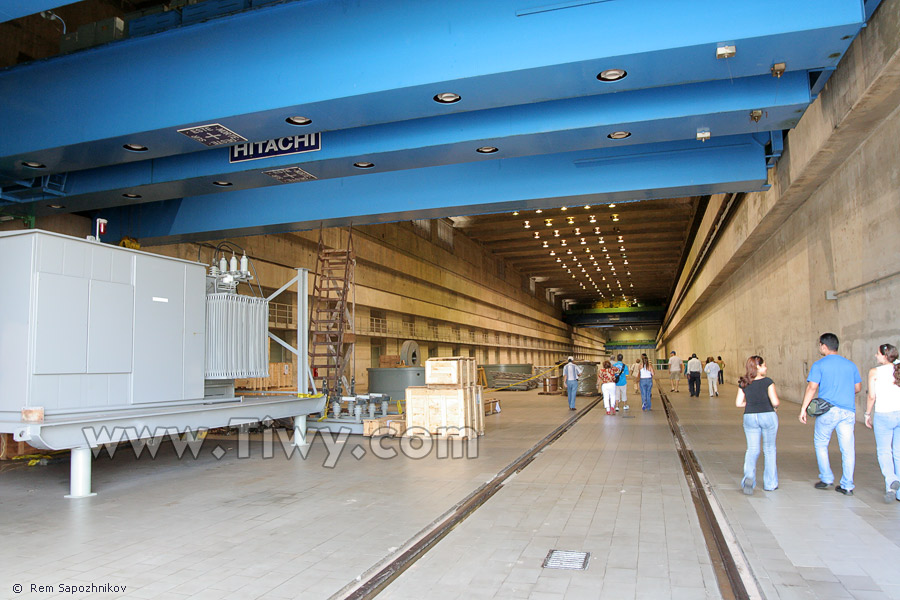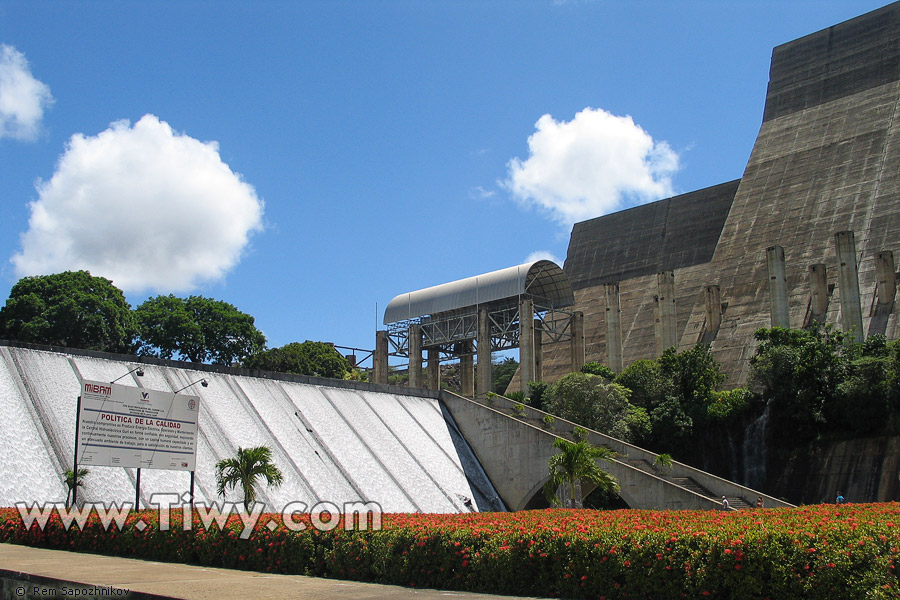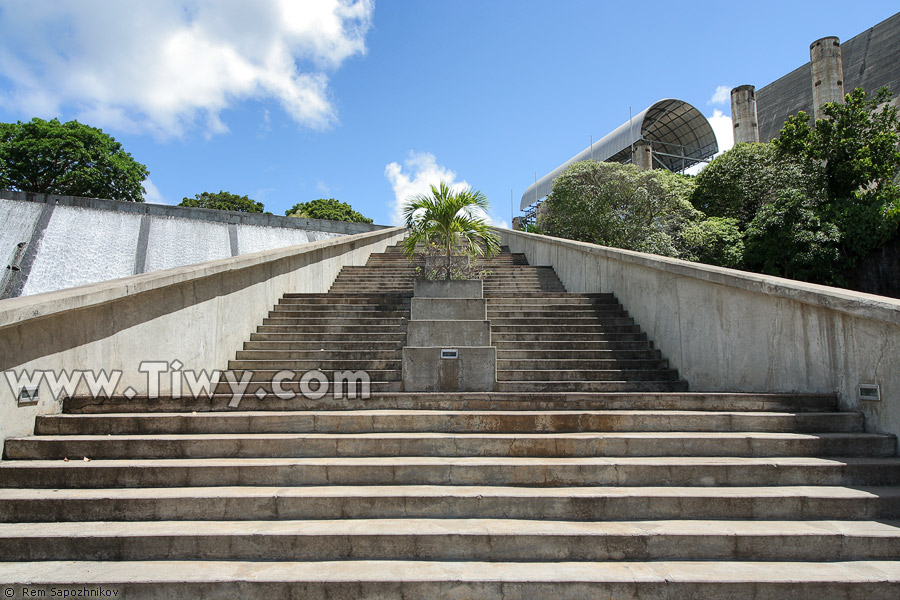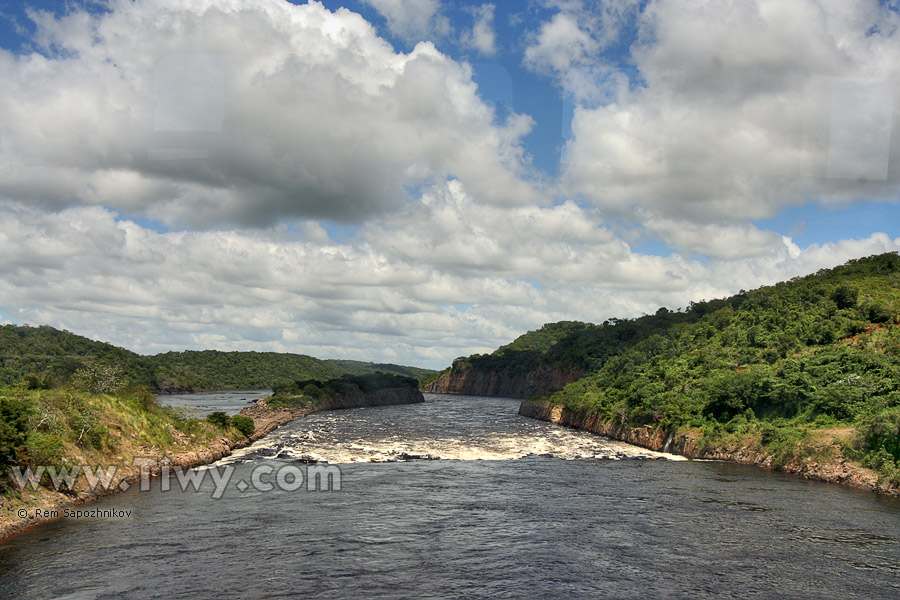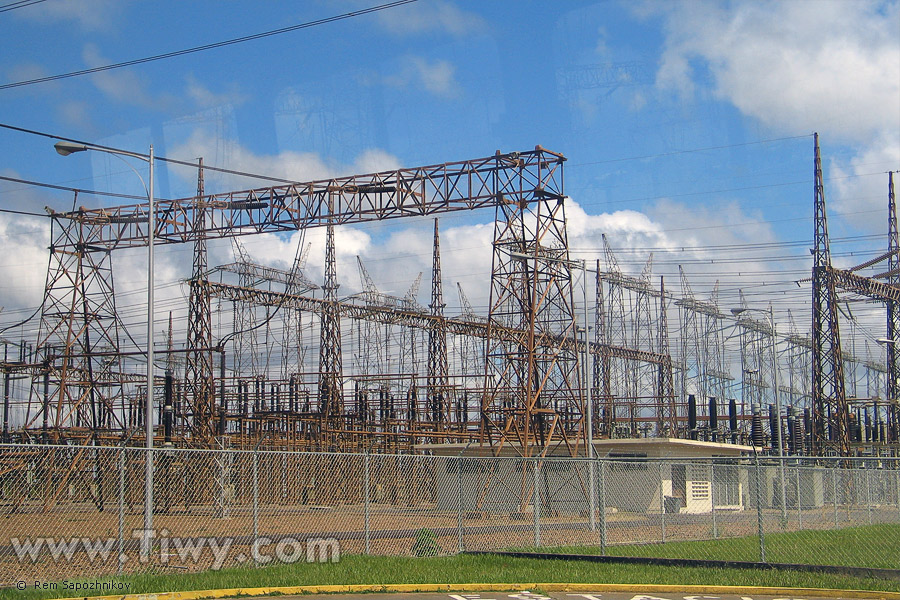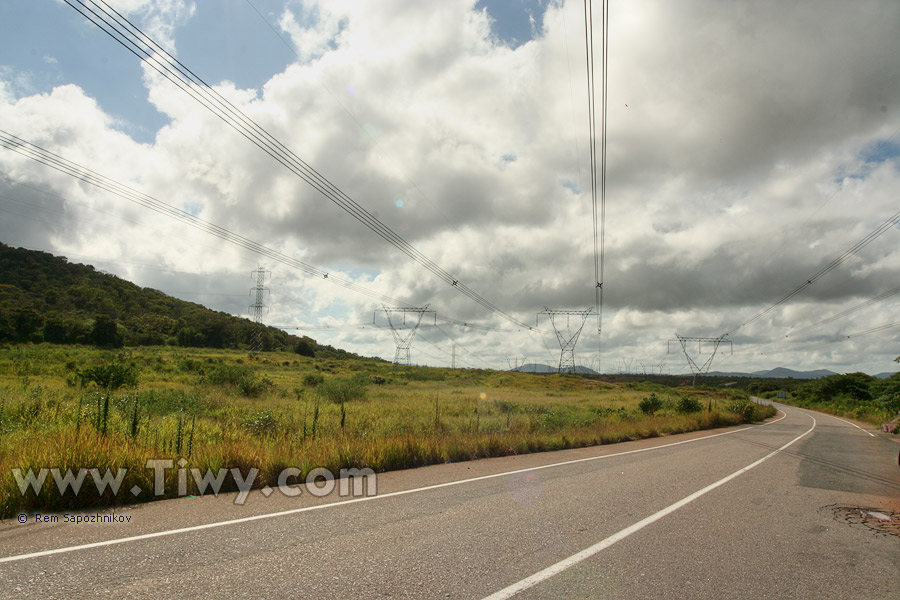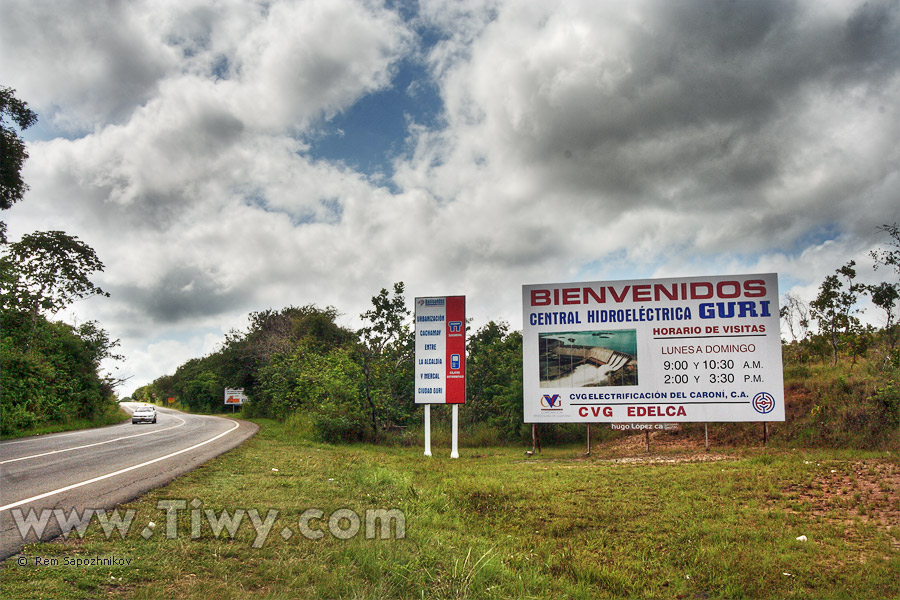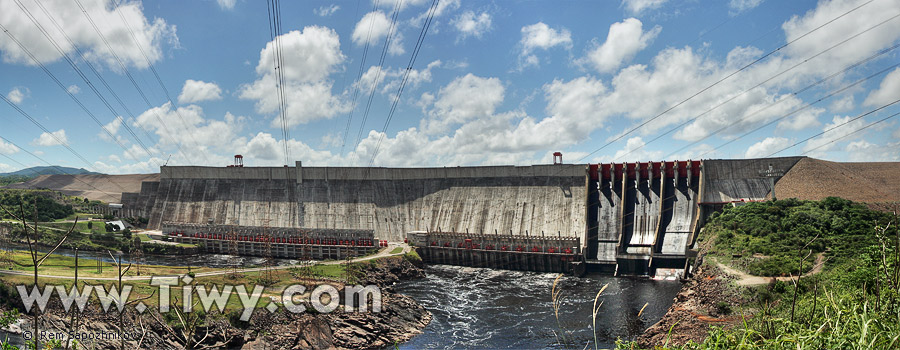«Guri» hydropower plant as a reserved area of Venezuelan opposition
2006
In 2006 we finally managed to reach «Guri» — then the second largest hydropower plant in the world. Its capacity — 10 200 MW that is almost twice as much as the largest power station in Russia — Sayano-Shushenskaya plant. Today «Guri» is the third most powerful plant in the world after the Chinese «Three Gorges Dam» and the Paraguayan-Brasil plant «Itaipu».
I remember that at Itaipu everything was filled with tourists: films how the plant was built were shown in the halls, bright buses took tourists to viewing points, souvenir shops were overcrowded. We expected to see something like this at «Guri», that presently bears the name of Simon Bolivar. It is situated far from the capital — in the state of Bolivar, one should go there either from Puerto Ordaz or Ciudad Bolivar. Quite good modern highways, road signs. However, after the guard at the entrance sent us to the registration window, we heard «We are off today!» Although the schedule displayed nearby, testified otherwise. So we had to insist. We've been registered, the car left at the parking lot, and we walked to the Center of guests reception. There was nobody else around except for us. After waiting for an hour, there came some more people, and we were taken for a tour. Luxurious tropical nature delighted by its splendour. Paved alleys, on which equipped cyclists used to rush by from time to time, were leading to all directions. It seemed that in this protected paradise you'd rather see an endless golf course or tennis court, but not a waterfall rotating the most powerful turbines.

Though we did not see a roaring waterfall, or operating turbines either. Since 2000 the reconstruction of one of the two generator halls is under way at «Guri». It was the hall that was chosen for demonstration! The life seemed to stop at «Guri». We languidly strolled along the hall, took photos, then brawled with administration, clearly unravelling the intention of such a tour: «Bolivarian revolution, that Venezuela lives through, has got nothing to do with us! And even if it has, then as a retard for progress: nothing works under it and everything collapses».
However, «Guri» covers 65% of the total need for power of Venezuela. Some portion of electric power is exported to the neighbouring countries — Colombia and Brasil. The «Guri» power plant comprises the dam of 1300 m long and 162 m high, concrete water outlet with maximum capacity of 25 500 m3/s and two generator halls with 10 hydraulic units in each.
On 30 April 2008 almost half of Venezuela for a couple of hours remained without power. One can imagine it: everything stopped to work (machines, lifts, traffic lights, subway...). People came out to the streets filled with chaotic traffic jams. Allegedly, power failure happed due to explosion at the «Guri» power plant. The reason for explosion was called a strong heat and high load to the plant equipment. We think that it was the first large-scale act of sabotage of the secret owners of «Guri». Similarly to PDVSA (state petroleum company) «concealed privatisation» took place in the largest power company «Electrificacion del Caroni» (EDELCA) and «Guri» is under authority of it.
Sabotage is initiated from inside the company, we witnessed its manifestation during the tour, and poor Venezuelans — during the «apagones» - sudden massive blackouts. President Hugo Chavez started to introduce proper order in power companies. The opposition resists and uses the «apagones» to compromise the authorities. But the majority of Venezuelans understands the nature of the problem and supports their president.
